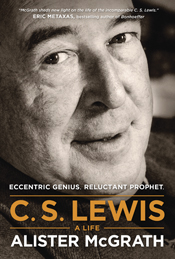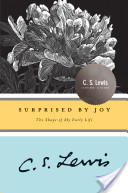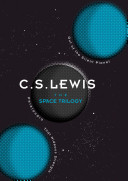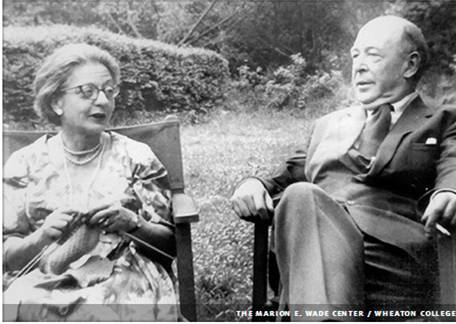
Review of Alister McGrath, C.S. Lewis — A Life: Eccentric Genius, Reluctant Prophet (Carol Stream, IL: Tyndale House, 2013) for the Emerging Scholars Network (ESN). Part II. Click here for Part I.
Things which I felt did not work:
Moving on to things that I found difficult about the work, I think the biggest thing was that the writing style was confusing to me. At times, McGrath seemed to fall into the awkward habit in his writing style of announcing his transitions in a way that seemed unnecessary. For instance, he ends the section on the Inklings with the following, “Yet this is to run ahead of our narrative. We must now consider the work which established Lewis’s reputation as a serious literary scholar – and which remains widely read to this day – the 1936 classic The Allegory of Love” (181-2). This leads to his next heading: “The Allegory of Love (1936)” (182). At least once, he set up the next section or transition with an entire paragraph that was an explanation of what he was going to say next. At some point, it became very noticeable in the narrative, similar to the way that someone’s verbal tick in a speech becomes noticeable if it is repeated enough times. While this is not a substantive complaint, books are narratives which are meant to be read and it made the flow very awkward and these explicit transitions seemed very unnecessary to the writing and should have been caught by an editor. It is possible this is more of an English (as opposed to American) writing style (he does favor English spellings over American spellings), but compared to several other biographies that I have read recently, this stylistically did not work and became distracting.

The big issue that McGrath takes up in this work, which he acknowledges places him alone among Lewis scholars, is the dating of Lewis’ conversion (135-146). While it is certainly true that autobiographical memory is open to critical evaluation by later generations of scholars and this may in fact become the standard view with further consideration, I was left wondering why the issue seemed to be such a big deal for McGrath. McGrath set up the issue around one of his central themes for the biography, connecting Lewis’ inner and external worlds by looking at Lewis’ own account in Surprised by Joy and comparing that with Lewis’ correspondence and known behavioral changes. This led him to the conclusion that Lewis converted to theism in 1930 and not 1929 as Lewis states in his autobiography. Of more interest to me, and an issue which is largely lacking in this biography, is the transformation of Lewis from the person that we meet in the early pages of the biography, one who is willing to experiment with sexual pain and S&M to the admittedly conservative Lewis who we encounter later in life (cf. 236). McGrath does not really take up that issue other than a couple of oblique references to issues like Lewis’ transition from a more low church expression to a high church Anglican. Considering the veiled implications (or not so veiled depending on how you read McGrath) which McGrath makes about Lewis’ relationship with Mrs. Moore – an admittedly thorny issue for Lewis scholars – it would seem that some more of these transitional blanks could have been addressed (or at least explored). One gets the impression that Lewis converted and was simply and immediately transformed, but it would seem that it is unlikely.

Finally, I have two issues with the way that McGrath took up Lewis’ corpus. On the one hand, there is an entire section given to Narnia, but very little is said about The Space Triology, and what is said makes the final volume the method to understand all three volumes, which seems especially questionable to me. I also question the rationale for the inclusion of a section on Narnia in a biography especially since it seems to me that most of what McGrath has to say is not biographical, but more literary criticism.
I found it difficult to understand what his rationale for including this section in the biography was. A larger complaint that I had with the work was that it was difficult to follow McGrath’s method for when and why he took up the issues that he did when he did in his narrative. There seemed to be little reason at times to take up the subjects he did in the chapters that he did. At times, it seemed like he was driven by thematic elements in Lewis’ life or works and other times he seemed to be following a strictly chronological telling of the narrative. On the whole, McGrath seemed to lack a coherent narrative key by which to unlock his telling of Lewis’ story.

This lack was especially true of the Narnia section. Although I think he makes a good distinction between imaginative and imaginary (263), which is helpful in understanding the scope of what Lewis was doing in the Narnia series, it seemed misplaced in a biography of Lewis. In particular McGrath leaves out many of the historical details of Lewis’ life which correspond to the writing of The Chronicles of Narnia. For instance, it is during the writing of the Narnia stories that Helen Joy Davidman, the American divorcee whom Lewis marries late in life, and her sons come to live with Lewis at the Kilns. Lewis in fact dedicates one of the Narnia books to the boys, but they make very little appearance in biographies of Lewis. McGrath recounts some interesting ways in which literary scholars are unpacking some of the background in The Chronicles of Narnia which I am sure that people who have no contact with literary analysis or are not deeply familiar with Lewis’ corpus will enjoy, but it still strikes me as oddly placed and incomplete for its treatment in a biography. On the whole, this reveals a question regarding McGrath’s intended audience. It is not clear to me whether he intended an academic audience or a more populist audience as his primary reader. It seems like many times he wants it to be both, but that seems very difficult to pull off, and in the end, I think many will say that he does not pull it off. Clearly McGrath is an academic, and I for one was hoping that his biography of Lewis would be more focused on an academic audience.
The second issue is more from the perspective of how he deals with the nature of Lewis’ apologetic work. McGrath points out many of the flaws of Lewis’ apologetic method, but he seems to miss what I think is one of the most important aspects of Lewis’ apologetic – it is not so much an argument for unbelievers as it is an invitation to unbeliever and believer alike to enter into a contemplative consideration of the totality of what it means to accept the tenets of Christianity. He does not argue for God’s existence or the reality of prophecy, but instead he wants the reader to consider what it means for someone to hold to the Christian faith and be an intellectual. The power of Lewis’ apologetic is in this way similar to St. Anselm’s ontological argument which argues for the existence of the greatest conceivable being or perhaps to Pascal’s famous wager. Lewis does not argue as a philosopher, but always more from a narrative. So when Lewis is challenged in his apologetic by a philosopher, Elizabeth Anscombe, McGrath presents that this is the major impetus for Lewis’ movement to an apologetic of story and thus the creation of Narnia. But this seems to ignore the reality of The Space Trilogy which has a strong apologetic emphasis along these same lines. I also think that McGrath (and others – most notably Josh McDowell) have missed the true nature of Lewis’ “trilemma” as presented in Mere Christianity. In a future ESN blog post, I would like to present an alternative way to understand what Lewis is trying to say in the trilemma, so I will not say more here.
In closing, I would say that if anyone is a Lewis lover or a Lewis scholar, this is a book that I would recommend despite what I see as some of its flaws. His treatment of Lewis’ academic life was definitely worth the read. If, however, you want a basic introduction to the life and world of Lewis, this work might be a bit ponderous. I actually found it helpful to have a working understanding of Lewis’ corpus and his life story to read C.S. Lewis — A Life: Eccentric Genius, Reluctant Prophet. McGrath sets out to write the definitive biography of Lewis; however it seems to me that this work fails to meet that standard. It does have value to those desiring to know more about Lewis’ life and work, especially in a couple of areas, like Lewis’ academic life. McGrath also published another work specifically on the intellectual world of Lewis which just deals with the academic life of Lewis and he has another book on Lewis coming out in 2014. Perhaps a future review of these works will reveal more focus on areas which seem to be lacking in the biography. On the whole, this work is a good one for ESN readers to get to know the bigger picture of an important Christian intellectual – a reluctant prophet, as McGrath calls Lewis in the title.
I am a PhD student in theology at Catholic University of America in Washington, DC. I am studying the theology of John Williamson Nevin, who taught in the seminary of the German Reformed Church in America in the mid-nineteenth century. He was also the president of Franklin and Marshall College and a friend to James Buchanan, the 15th president of the United States. I am currently a teaching fellow at CUA, teaching undergraduate theology and Church History classes. My goal is to teach at a college or university after completing my degree program. I am also the current vice-president of the graduate student association at CUA. Before life as a grad student (if that were an acronym it would be BLaaGS) I was a teacher and principal in secondary education at various Christian schools in the Northeast. My family and I currently live in Hagerstown, MD.

Leave a Reply